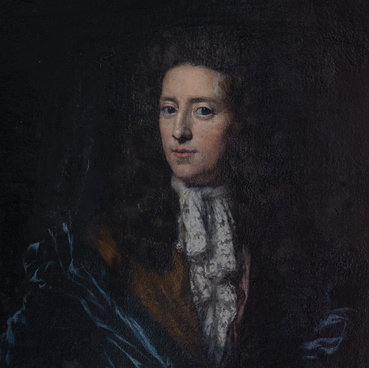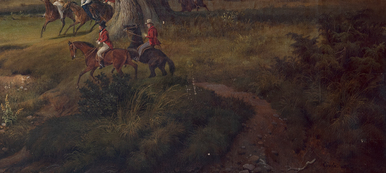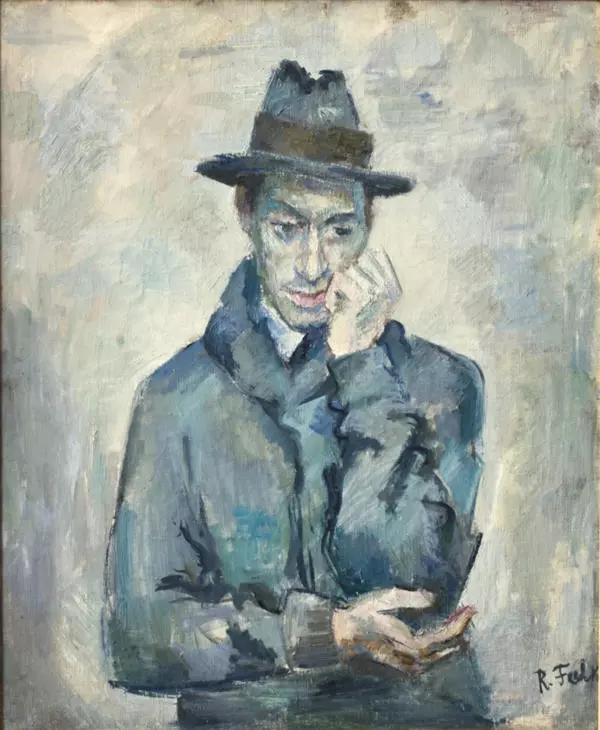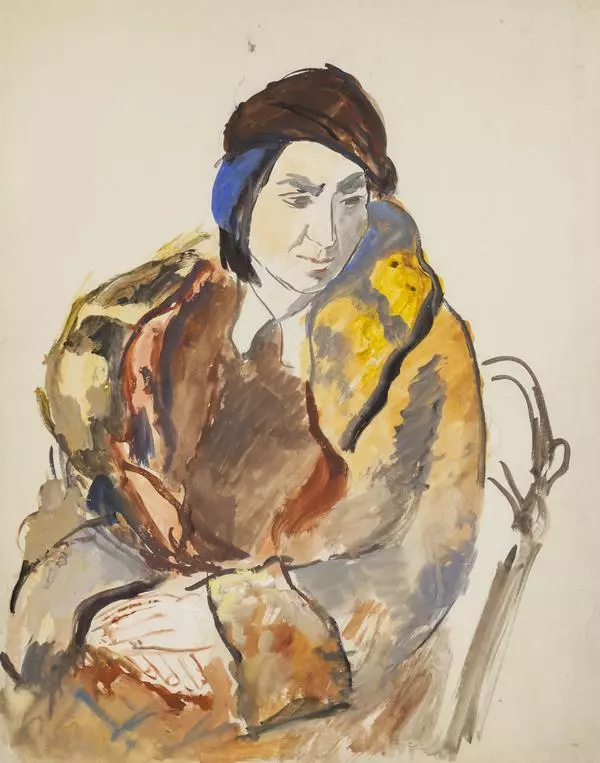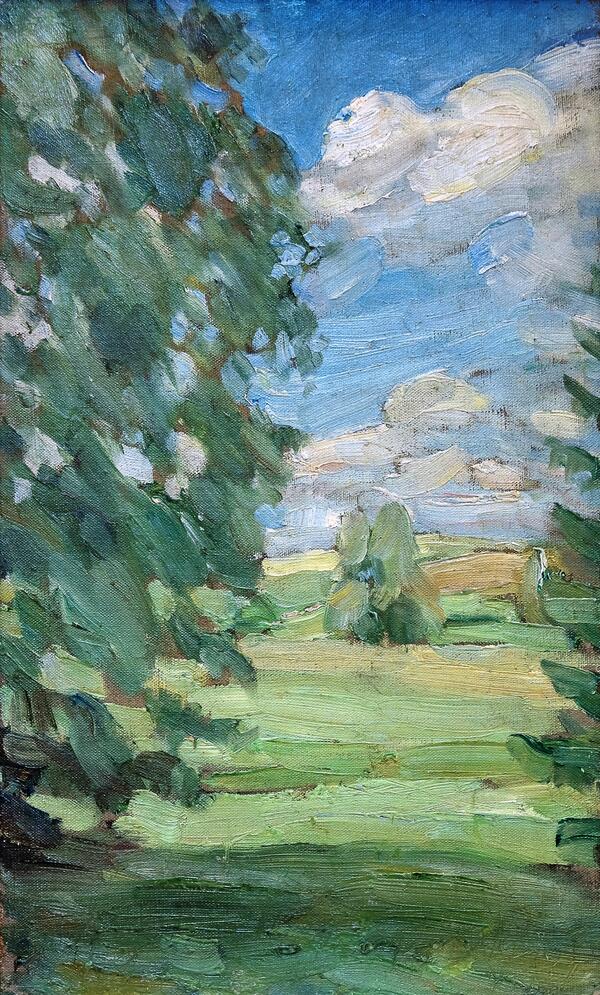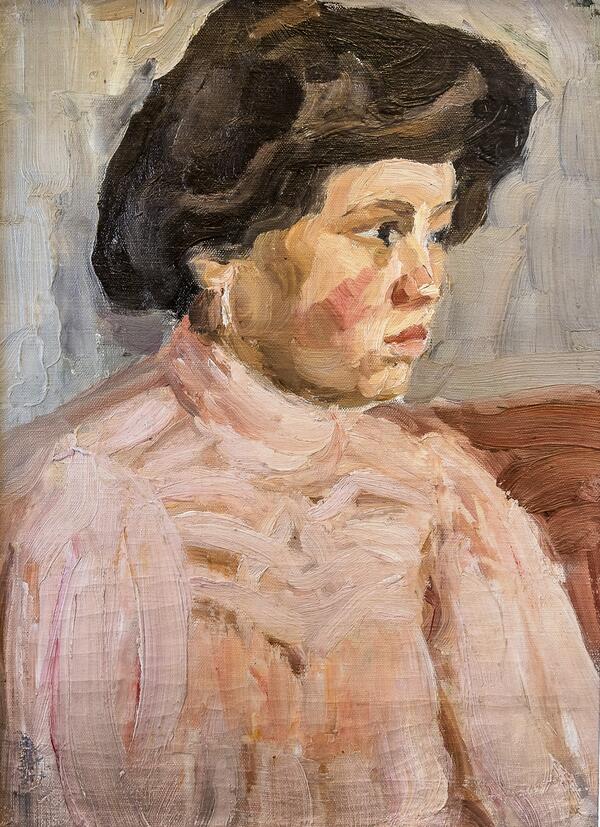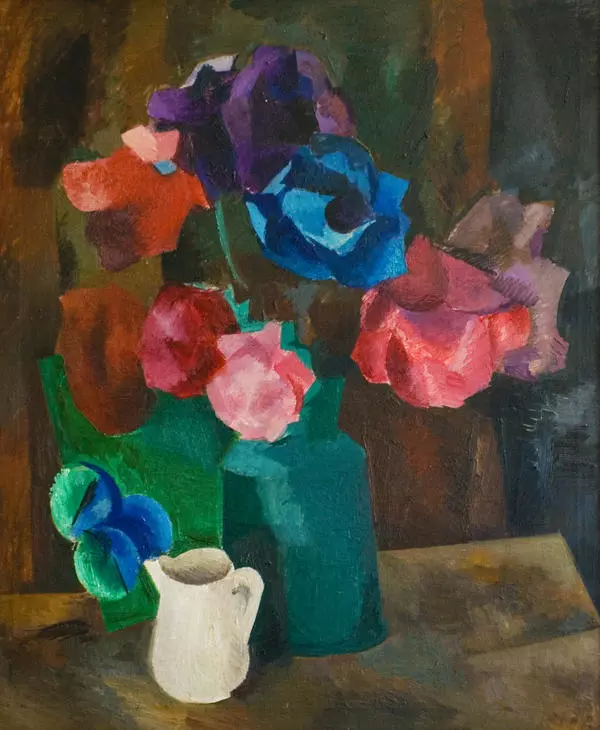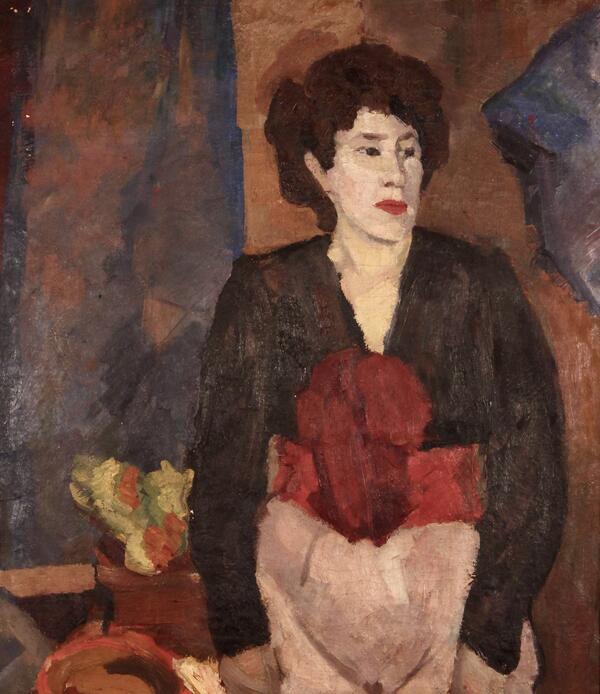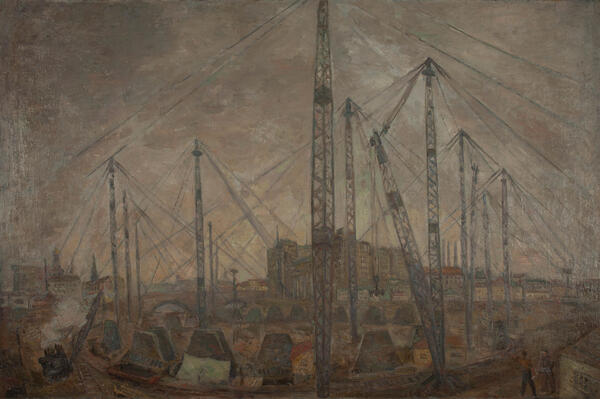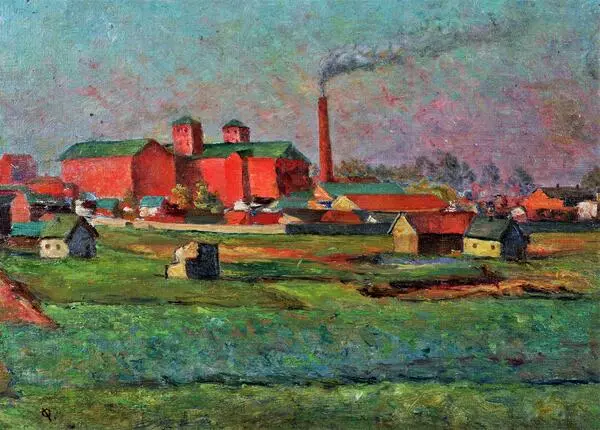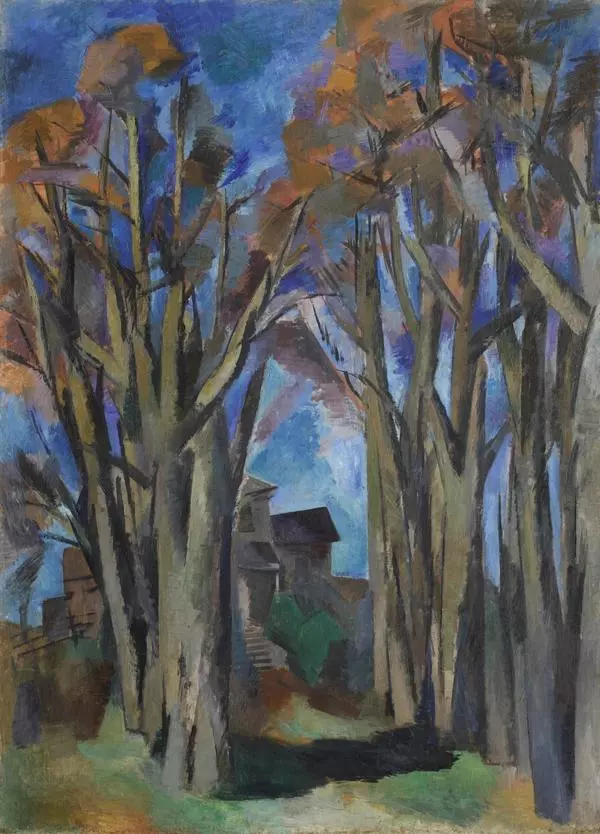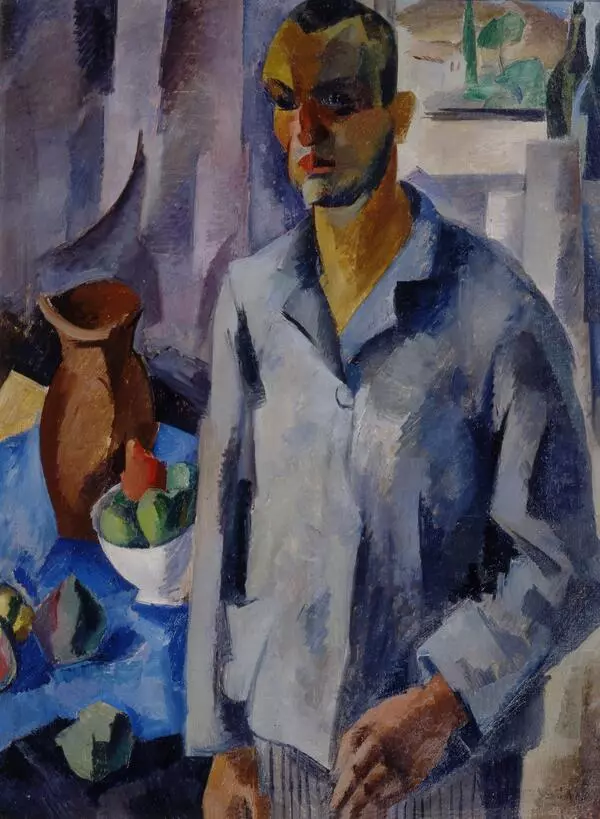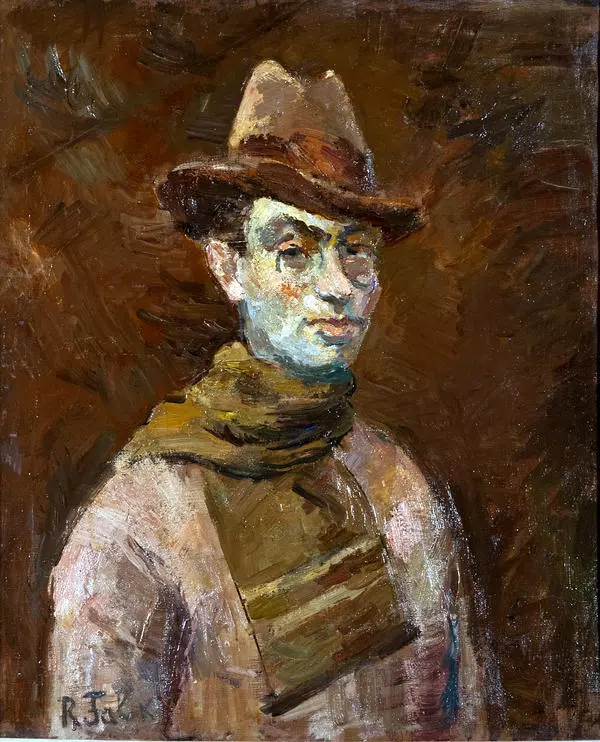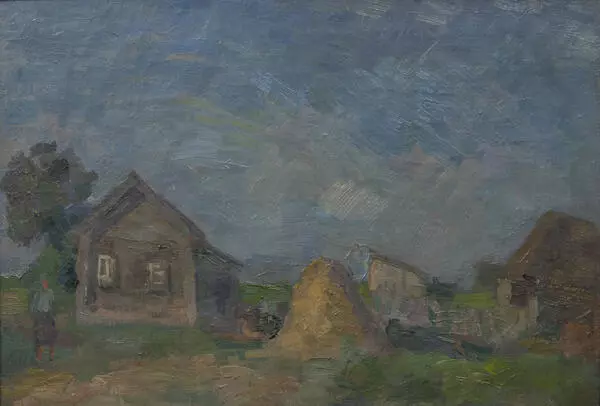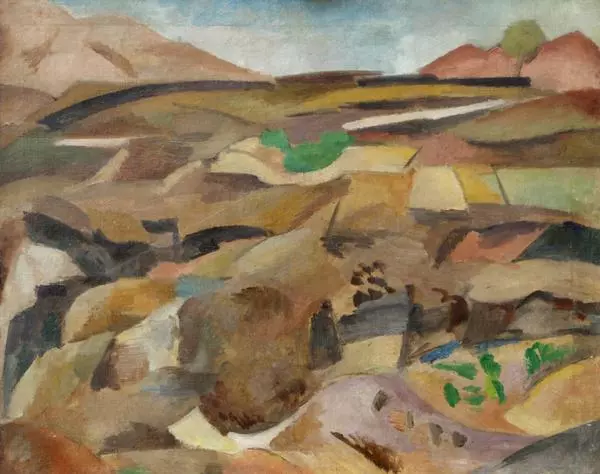Robert Falk was born in 1886, in Moscow, in the family of Rafail Falk, a lawyer. He took painting classes from Konstantin Yuon and Ivan Dudin. In 1910, Robert Falk became one of the founders of the artistic movement Bubnovy Valet (‘Jack of Diamonds’) — the major association of early avant-garde.
Intense colours, lines and plastic shapes became the subjects that the masters of the new epoch really worshiped. The pieces created by the members of Bubnovy Valet association directly reflected these ‘revelations’. According to Robert Falk, the main objective for the painter should be ‘reconstruction of the life of colours, of the precious colour texture on the canvas’.
Portrait of Elizaveta Sergeyevna Potekhina by Robert Falk belongs to the times, when Russian artists were trying to absorb the painting practices of Paul Cézanne and the style of cubism. The artist’s first wife Elizaveta Sergeyevna was the model. They were both students of Moscow School of Art, Sculpture and Architecture, and in order to marry her Robert Falk adopted the Christianity and was baptized with the name of Roman. However, after the revolution, he went back to his own name. We cannot call this image attractive. It is rather “a bare nerve” of inner tension, anxiety, ambivalence embodied with a powerful language of colour and shape. The crimson jacket is contrasting with the black bowknot and the skirt. The green hues of the curtain in the background extinguish the antagonism of colours. In this early work created during the years at Moscow School of Art, Sculpture and Architecture, Falk’s search for ‘descriptive colour’ is already visible — he was looking for not just beautiful and true-to-life colour, but the one creating a psychological image. Falk changed the features of his wife’s face. Instead of graceful lissom hands, he depicted tensed, inflexible and at the same time fragile hands like boats. The woman’s figure is also tensed and unstable. The armchair, in which she is sitting, looks small, tight and uncomfortable, and the pillow, on which her hand is leaning, looks hard like a stone. Falk was painting the portrait, as if he was building a house, when the priority was given to the foundation and essence.
Intense colours, lines and plastic shapes became the subjects that the masters of the new epoch really worshiped. The pieces created by the members of Bubnovy Valet association directly reflected these ‘revelations’. According to Robert Falk, the main objective for the painter should be ‘reconstruction of the life of colours, of the precious colour texture on the canvas’.
Portrait of Elizaveta Sergeyevna Potekhina by Robert Falk belongs to the times, when Russian artists were trying to absorb the painting practices of Paul Cézanne and the style of cubism. The artist’s first wife Elizaveta Sergeyevna was the model. They were both students of Moscow School of Art, Sculpture and Architecture, and in order to marry her Robert Falk adopted the Christianity and was baptized with the name of Roman. However, after the revolution, he went back to his own name. We cannot call this image attractive. It is rather “a bare nerve” of inner tension, anxiety, ambivalence embodied with a powerful language of colour and shape. The crimson jacket is contrasting with the black bowknot and the skirt. The green hues of the curtain in the background extinguish the antagonism of colours. In this early work created during the years at Moscow School of Art, Sculpture and Architecture, Falk’s search for ‘descriptive colour’ is already visible — he was looking for not just beautiful and true-to-life colour, but the one creating a psychological image. Falk changed the features of his wife’s face. Instead of graceful lissom hands, he depicted tensed, inflexible and at the same time fragile hands like boats. The woman’s figure is also tensed and unstable. The armchair, in which she is sitting, looks small, tight and uncomfortable, and the pillow, on which her hand is leaning, looks hard like a stone. Falk was painting the portrait, as if he was building a house, when the priority was given to the foundation and essence.


